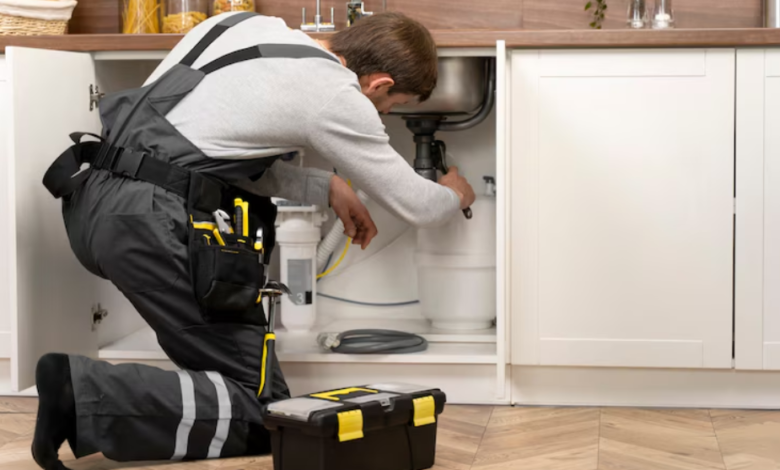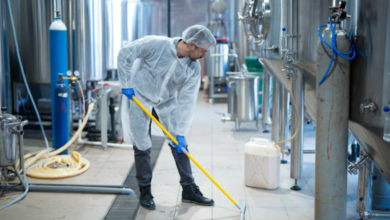How Emergency Drain Cleaning Services Prevent Costly Water Damage

Water damage doesn’t knock politely and it shows up unannounced—quickly, sometimes quietly, and always inconveniently. One day, everything seems fine. The next? You’re stepping in water that shouldn’t be there.
It usually starts with something small. A drain that’s slow. A toilet that bubbles when the sink runs. Maybe you notice a smell, maybe not. Either way, there’s a moment when you decide it’s probably nothing.
But here’s the thing—it might not be.
That’s exactly when an emergency drain cleaning service can change the outcome. Because what feels minor today could become a disaster tomorrow.
How Small Drain Problems Turn into Big Repairs
Most people don’t realize how quickly water spreads. It seeps into floors, walls, and insulation. And it doesn’t just stop there—it lingers, inviting mold, softening wood, rusting metal.
And that clogged kitchen sink? It’s not just about water not draining fast enough. Grease can harden deep in the line, trapping bits of food, hair, soap—whatever’s been rinsed down. Over time, pressure builds behind that blockage. Eventually, the water finds a way out. Not down the pipe—out.
A backup like that doesn’t just make a mess. It ruins things. Cabinets, drywall, flooring. All soaked, sometimes beyond repair.
Emergency Services Move Faster—and That’s the Point
Speed matters more than people think. A few hours can mean the difference between a quick clean-up and replacing half the kitchen.
Emergency plumbers come prepared to handle the whole thing in one go. They show up with tools most people haven’t even heard of. Like camera scopes that go into the drain to find the exact location of the blockage. That means no guesswork, no digging through walls to “see what’s going on.”
And if the clog’s serious, a regular snake might not cut it. That’s where hydro jetting comes in. It uses high-pressure water to blast through clogs and scrub the inside of the pipes clean. It’s effective—and way more thorough than anything you can buy at a hardware store.
Honestly, most homeowners wait too long. Not because they don’t care, but because the signs aren’t dramatic at first. By the time they make the call, the damage is already spreading behind the walls.
See also: Why Every Homeowner Should Work with a Fencing Contractor
Common Causes of Drain Emergencies
Some of these might sound familiar. Others might not.
- Bathroom drains: Hair, toothpaste, and soap scum collect fast. Over time, it’s like trying to wash water through a sponge.
- Kitchen sinks: Grease is a major offender. Even small amounts can solidify and trap food particles, creating a thick, sticky blockage.
- Flushable wipes: These aren’t really flushable. They clump and block pipes, especially when combined with grease or other debris.
- Tree roots: Roots grow toward moisture. If there’s even a tiny crack in a pipe outside, roots will find it. Once inside, they expand and clog everything.
- Old plumbing: Older pipes are rougher inside, so debris gets caught more easily. It doesn’t take much to start a chain reaction.
Individually, none of these issues seems urgent. Collectively, they add up—and they don’t resolve themselves.
What’s Actually at Risk
Let’s get practical. Here’s what water damage can mean in real terms:
- Floor replacement: Once water soaks into hardwood or laminate, warping starts. Carpets? They hold on to water and mold.
- Drywall repair: It swells, softens, and sometimes crumbles. Cutouts need to be made. Sometimes, whole panels need to be replaced.
- Electrical damage: Water doesn’t stay where you want it. If it reaches outlets, you’re dealing with a safety risk and potentially damaged wiring.
- Mold growth: This is the big one. Mold starts growing within 24 to 48 hours in damp spaces. And once it’s there, removal is expensive—and disruptive.
When people put off drain issues, they’re not avoiding a bill. They’re often trading one bill for five bigger ones.
How to Tell It’s Time to Call
A little delay can be acceptable. A lot of delay? Not so much. Some warning signs that shouldn’t be ignored:
- Water draining slower than usual—even slightly
- Bubbling or gurgling sounds from other fixtures
- Smell of sewage coming from lower-level drains
- Water backing up into showers or bathtubs
- Unusual wet spots near floor drains or basement walls
If more than one of those is happening at once, it’s probably not a coincidence. It’s a system-wide issue—and it needs attention now, not next weekend.
What to Expect During a Service Call
There’s no single script. It depends on the problem. But generally, here’s what happens:
- Inspection – Technicians might use a sewer camera inspection to check the full length of the pipe and see exactly where things are stuck.
- Clearing the line – Whether it’s with a jetter or a mechanical snake, they’ll get rid of the clog.
- Flow testing – After clearing, they’ll run water through to confirm everything is back to normal.
- Advice – If something more serious is going on—pipe damage, root intrusion, etc.—you’ll know. And you’ll know what to do next.
Most emergency visits aren’t dramatic. But they prevent drama.
Prevention Is the Real Win
Nobody wants to make that emergency call. The trick is to avoid needing one. Preventive maintenance helps. That means:
- Keeping grease out of the sink
- Using drain screens in showers
- Not flushing wipes (even if the label says you can)
- Getting periodic inspections if the home is older or has had previous drain issues
Still, things happen. And when they do, fast help isn’t a luxury—it’s a way to protect everything else.
Ending Thought
An emergency drain cleaning service does more than just solve a plumbing issue. It stops the problem from growing into a structural one.
Because water doesn’t stop moving just because you’re not watching.




